Reaching Fair Agreements
What is Collaborative Family Law?
Collaborative Family Law is a way of resolving the difficult legal and financial issues that arise from separation without going to court. It is about cooperation, not confrontation. It aims to meet the real needs and interests of both spouses – and avoid court. It fosters positive post-separation relationships – especially important when there are children.
Collaboration practice recognises that separation is not just a legal process but also a psychological process. Collaborative practice aims to meet the legal, financial and emotional needs of the entire family and achieve the best possible outcomes for spouses and children.
Five fundamental features of collaborative practice are:
- All discussions and negotiations occur at face-to-face roundtable meetings of both spouses and their lawyers. This avoids the delays, misunderstandings and tactical ploys that can arise when negotiations are conducted through emails, telephone calls and via lawyers.
- Discussions and negotiations focus on the real needs and concerns of both spouses – not just lawyers discussing what may or may not occur at court.
- Lawyers give advice to their client in the presence of the other spouse and lawyer at the roundtable meetings. Both spouses hear the advice of both lawyers.
- Neutral financial, valuation and parenting experts can be agreed and participate.
- If resolution cannot be reached, and either or both spouse wishes to commence court proceedings, the lawyers engaged in the collaborative process are unable to continue acting.
Interdisciplinary collaborative practice allows for the involvement of neutral financial and mental health collaborative practitioners. Counsellors or psychologists known as divorce coaches can help spouses deal with the emotional effects of separation and suggest effective communication techniques. This can assist spouses in negotiating agreements without unnecessary conflict and to establish post separation modes of communication about children and other long term issues. A child counsellor or psychologist can help parents consider age-appropriate parenting arrangements – including speaking with the children to assist them in dealing with the separation. A neutral financial expert can help spouses identify a range of options to best meet their financial needs.
Collaborative practice and collaborative family law has many advantages including:
- Each spouse is represented by his or her own lawyer throughout the process. Both lawyers help you and your spouse work as a team to:
-
- identify your common interests and understand each other’s concerns;
- exchange information;
- explore a wide range of possible choices; and
- reach the best possible solution that is acceptable to both of you.
-
- The Participation Agreement requires both spouses to provide full and frank disclosure of all relevant information. Lawyers are obliged by the Agreement to require that their own client meets this obligation – or to cease acting if their client refuses to do so.
- Both spouses have skilled legal advisers at every stage of the process. Both lawyers understand how to reach creative settlements. You are never on your own; your lawyer is at your side, explaining issues and helping you to achieve goals by mutual participation and agreement.
- The collaborative process is different to the traditional positional bargaining approach that most lawyers adopt. Traditional negotiations are generally based on what lawyers argue might happen in court (although most separated spouses do not go to court). Parties take opposing positions based on these theoretical court outcomes and make allegations and counter-allegations to support them. This process can worsen the relationship between spouses and make future communication and cooperation (in respect of children, for example) more difficult.
- Collaborative practice (in contrast to traditional negotiations) is based on both spouses and lawyers adopting interest based negotiation techniques. The threat of court (or what a court might decide) is not made. Spouses and lawyers work together as members of a settlement team, rather than working against each other as “opposing parties”.
- In the Collaborative Law Process spouses:
-
- treat each other with respect;
- listen to each others’ perspectives, interests and concerns;
- explore all possible choices;
- let go of the past in order to focus on the future;
- establish new techniques for communicating.
-
What is the Collaborative Process?
Both spouses must instruct lawyers who are trained and accredited as Collaborative Practitioners.
A series of group meetings of spouses and lawyers is held. The exact number and length will vary.
A typical series of meetings may be as follows:
- Initial meeting to confirm each party’s commitment to the collaborative process. The Collaborative Participation Agreement is checked and signed by each party and lawyer together. Spouses are able to meet and establish trust with the other spouse’s lawyer.
- At the second meeting, parties and lawyers will identify issues of concern to each party. They will identify what additional information may be required to fully understand the relevant issues. This might involve exchanging of documents or obtaining reports from experts. For example, real estate value, superannuation or business valuation.
- Following identification of issues and collating of relevant information, the third meeting allows for brain storming of all possible options and solutions. This then allows for negotiations as to which possible solutions might be acceptable to both parties. This would then enable the drafting of relevant settlement documents to reflect the agreement.
- Final meeting in which the settlement documents can be checked together by parties and lawyers, and if acceptable, signed jointly.
Generally, the location of each meeting alternates between the offices of the lawyers. Meetings normally take between one to two hours. Discussions and negotiations occur primarily at the four way meetings to encourage trust and avoid misunderstanding. There is contact between spouses and their respective lawyers in between meetings in order to obtain relevant information and plan for the next meeting, as well as checking settlement documents. As a result, meetings generally occur around two weeks apart.
Matthew Shepherd is a member of the Relationships Australia Collaborative Practice Group, and Collaborative Professionals NSW, and teaches Collaborative Law and Dispute Resolution Advocacy at the University of Technology Sydney.
Matthew can explain the Collaborative process in more detail and help you decide if it is the best process for you to solve your family law issues. Call Matthew on 98770877.

